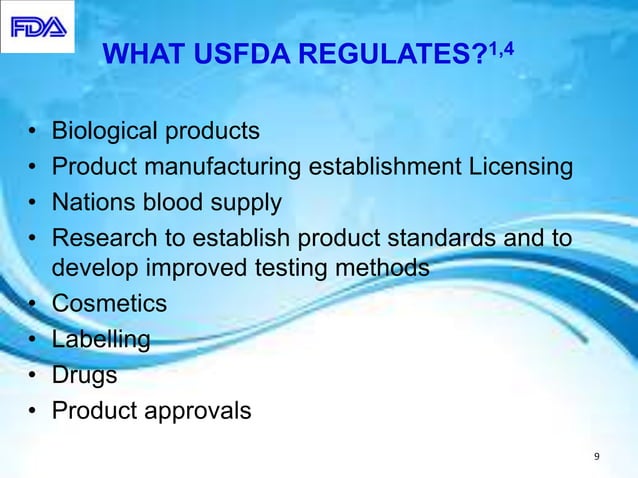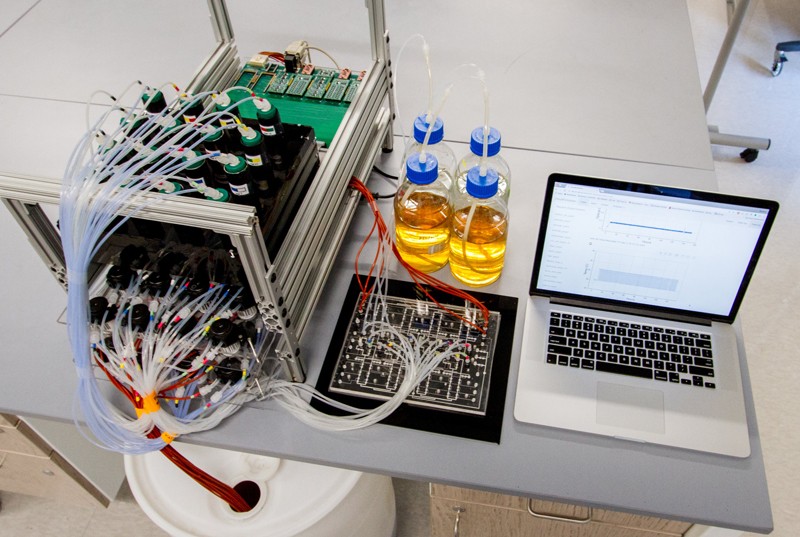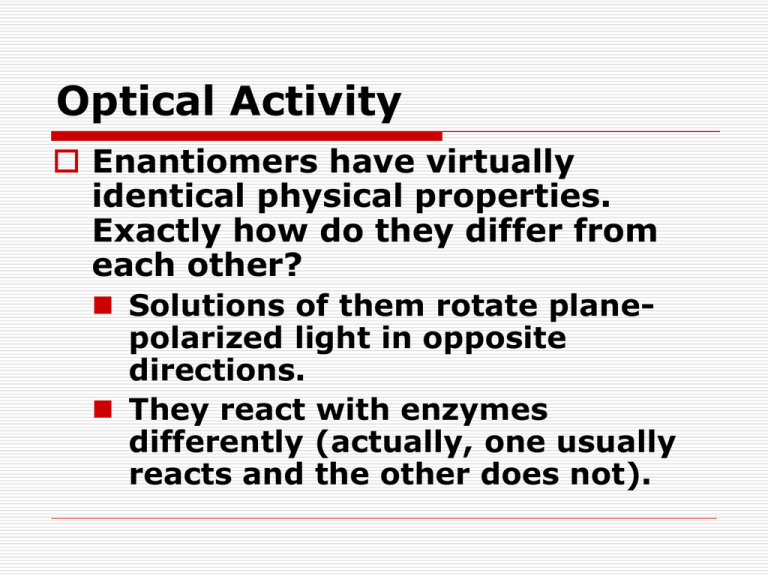Significance Of Optical Activity In Pharmaceutical Industry Presentation
| Introduction to Optical Activity in pharmaceutical industry | ||
|---|---|---|
| Optical activity refers to the ability of certain compounds to rotate the plane of polarized light. It plays a crucial role in the pharmaceutical industry for drug development and quality control. The optical activity of a compound can provide valuable information about its structure and purity. | ||
| 1 | ||
| Chiral Compounds and Enantiomers | ||
|---|---|---|
| Chiral compounds have a non-superimposable mirror image and exist as enantiomers. Enantiomers are molecules that are mirror images of each other and have different optical activities. Pharmaceutical compounds often contain chiral centers, making optical activity analysis essential. |  | |
| 2 | ||
| Determining Purity and Quality Control | ||
|---|---|---|
| Optical activity analysis is used to determine the purity of pharmaceutical compounds. It helps identify the presence of impurities or unwanted enantiomers in drug formulations. Accurate analysis of optical activity ensures the quality and effectiveness of pharmaceutical products. | ||
| 3 | ||
| Pharmacokinetics and Pharmacodynamics | ||
|---|---|---|
| The enantiomers of a drug can exhibit different pharmacokinetic and pharmacodynamic properties. Different enantiomers can have varying rates of absorption, distribution, metabolism, and elimination. Understanding the optical activity of a drug is crucial for predicting its behavior in the human body. | ||
| 4 | ||
| Drug Development and Formulation | ||
|---|---|---|
| Optical activity analysis is important in drug development to select the appropriate enantiomer. The desired enantiomer can exhibit improved therapeutic effects and reduced side effects. Formulation of drugs containing chiral compounds requires careful consideration of their optical activity. | ||
| 5 | ||
| Regulatory Compliance | ||
|---|---|---|
| Regulatory authorities, such as the FDA, require optical activity analysis for pharmaceutical products. Proper characterization and control of enantiomers are necessary for regulatory compliance. Accurate determination of optical activity ensures the safety and efficacy of pharmaceuticals. | ||
| 6 | ||
| Chiral Separation Techniques | ||
|---|---|---|
| Various techniques are used for chiral separation, including chromatography and crystallization. Chiral chromatography utilizes chiral stationary phases to separate enantiomers. Crystallization techniques can selectively produce or separate enantiomers based on their solubilities. | ||
| 7 | ||
| Future Trends and Innovations | ||
|---|---|---|
| Advancements in technology are improving optical activity analysis in the pharmaceutical industry. Automated and high-throughput methods are being developed for efficient analysis. The integration of optical activity analysis with other analytical techniques enhances pharmaceutical research. | ||
| 8 | ||
| Conclusion | ||
|---|---|---|
| Optical activity analysis is of significant importance in the pharmaceutical industry. It aids in determining purity, selecting the appropriate enantiomer, and ensuring regulatory compliance. Understanding and controlling optical activity are crucial for the development and quality control of pharmaceutical products. | ||
| 9 | ||
| References (download PPTX file for details) | ||
|---|---|---|
| Smith, D., & Arora, K. (2017). Optical activi... Fasano, A., & Pistone, A. (2018). Optical act... US Food and Drug Administration. (2002). Guid... |  | |
| 10 | ||







